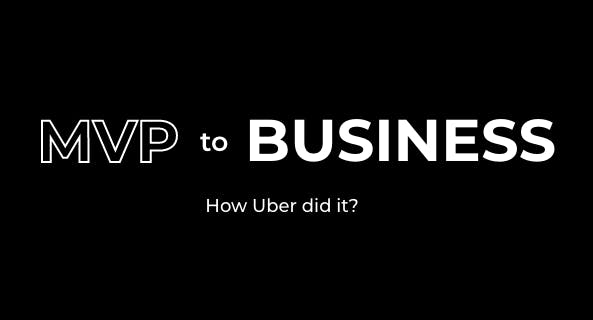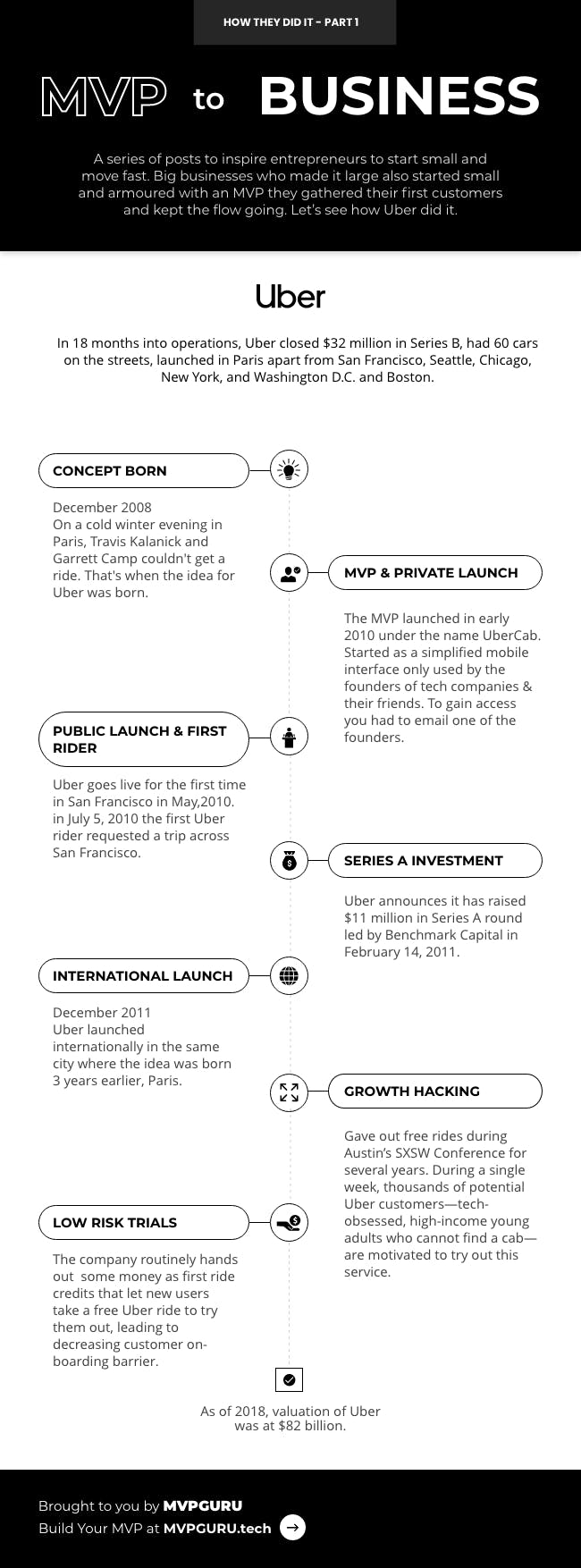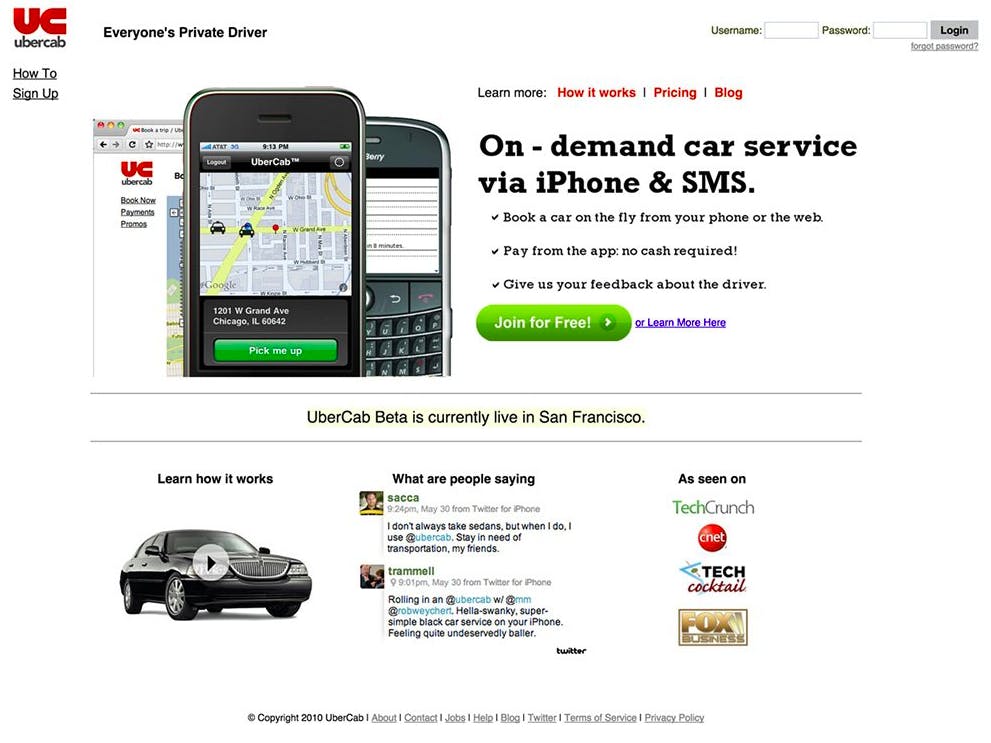
How Uber started with an MVP and raised $32M in 18 months
Uber is one of the sought after case studies in startup space for their Huge valuation, quick launch, interesting growth hacking techniques, and early-round fundraisings.
PS Qube Action area II-D, New Town Kolkata, Pin -700136


Uber is one of the sought after case studies in startup space for their Huge valuation, quick launch, interesting growth hacking techniques, and early-round fundraisings.
In 18 months into operations, Uber closed $32 million in Series B, had 60 cars on the streets, launched in Paris apart from San Francisco, Seattle, Chicago, New York, and Washington D.C. and Boston.
At Appradius we are going to do a series of posts to inspire entrepreneurs to start small and move fast. Big businesses who made it large also started small and armored with an MVP they gathered their first customers and kept the flow going. Let’s see how Uber did it.
Let's see how Uber did it.

In Paris 2008, Travis Kalanick and Garrett Camp were attending the LeWeb, an annual tech conference "where revolutionaries gather to plot the future" - The Economist. After the conference, on the night of December, they were unable to get a cab. Initially, the idea was for a timeshare limo service that could be ordered via an app. After few months Garrett Camp bought the domain name ubercab.com.
At that point, both Kalanick and Camp had sold startups they co-founded for large sums. Kalanick sold Red Swoosh to Akamai Technologies for $19 million while Camp sold StumbleUpon to eBay for $75 million.
Garrett began working on a prototype for UberCab as a side project in 2019. The service then was tested in New York in early 2010 using only three cars, and the official launch took place in San Francisco in May 2010. The ease and simplicity of ordering a car fueled the Ubercab's rising popularity. With the tap of a button, a ride could be ordered; GPS identified the location and the cost was automatically charged to the credit card of the user.

They recruited limo drivers with livery licenses first. These people already ran their own businesses and were already making money. It was easy to convince them.
Then they targeted the tech-savvy San Francisco community. To incentivize passengers, they offered free rides at local tech events. Uber knew that launching in San Francisco meant that they would be interacting regularly with the tech community who are continually looking for new tools and services that improve their quality of life.
Customers are the best salesperson. With the ease of use of the product and right audience Uber managed to make it right.
“I’m talking old school word of mouth, you know at the water cooler in the office, at a restaurant when you’re paying the bill, at a party with friends — ‘Who’s Ubering home?’ 95% of all our riders have heard about Uber from other Uber riders.” —Travis Kalanick
“When someone sees the ease of use, the fact that they press a button on their phone and in under 5 minutes a car appears, they inevitably become a brand advocate.” —Max J. Crowley, Business Development at Uber
Uber gave out free rides during Austin’s SXSW Conference for several years. During a single week, thousands of potential Uber customers tech-obsessed, high-income young adults who cannot find a cab are motivated to try out this service.
As of 2018, the private valuation of Uber was at $82 billion. As of June 2019, revenue was 316.6 crores USD. The company now has a market cap of roughly $49 billion and trade as a public company.